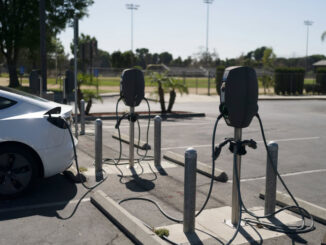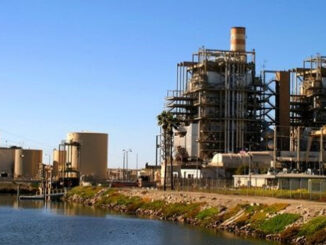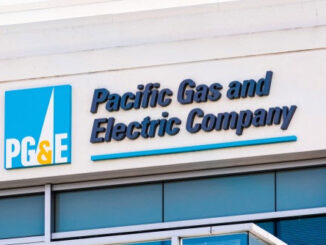
In a move that underscores the mounting pressures on California’s oil refining industry, Phillips 66 is set to begin winding down operations at its 139,000 barrel-per-day (bpd) Los Angeles-area refinery starting in September 2025, with full idling expected by the fourth quarter. This closure, affecting a facility that employs around 600 workers and 300 contractors, will see most layoffs occurring in December.
The refinery, located in Wilmington, has been a key producer of gasoline, diesel, and jet fuel for the region, but its shutdown signals broader challenges driven by state policies.
The Role of Gavin Newsom’s Heavy-Handed Regulations
Governor Gavin Newsom’s aggressive energy agenda has played a central role in pushing refineries like Phillips 66 to the brink. Policies such as the state’s cap-and-trade program, Low Carbon Fuel Standard (LCFS), and mandates for 100% electric vehicle sales by 2035 have piled on compliance costs, making operations increasingly unprofitable. The cap-and-trade system alone adds an estimated 25 cents per gallon to fuel prices, while the LCFS incentivizes conversions to renewable diesel, indirectly squeezing gasoline production. Drilling permits have plummeted under Newsom, from thousands annually to mere dozens in 2024, starving refineries of local crude and forcing reliance on expensive imports.A particularly burdensome measure was the minimum fuel inventory law signed by Newsom in October 2024, which requires refiners to maintain stockpiles to prevent price spikes during maintenance.
Are you Paying High Taxes in New Jersey, New York, or California?
This law, intended to stabilize supplies, instead demands massive investments in storage—costs that refiners pass on or simply cannot sustain. Phillips 66’s closure announcement came just days after the bill’s signing, marking it as the “first casualty” of this policy. Similarly, Valero cited stringent regulations and high costs when announcing the shutdown of its 145,000 bpd Benicia refinery by April 2026. California’s refinery count has dwindled from nearly 50 in the 1980s to just 14 today, with four (potentially five) closures during Newsom’s tenure alone, slashing capacity by a third since the start of the decade.In a rare intervention, state officials under Newsom are scrambling to find a buyer for Valero’s Benicia facility to avert further capacity loss. This move highlights the administration’s recognition of the crisis, yet it comes too late for Phillips 66. Newsom has paused plans for a refining margin cap and recommended boosting imports, but these are band-aid solutions that ignore how his policies have created an “energy island”—isolated by unique fuel standards like CARBOB, which few out-of-state refineries can produce.
Newsom’s Energy Hypocrisy: Green at Home, Dirty Abroad
While Newsom touts California as a green energy leader, the state’s dependence on foreign oil exposes deep hypocrisy. California imports nearly two-thirds of its crude, with 16.9% coming from Ecuador’s Amazon rainforest in 2024—fueling deforestation and human rights abuses in indigenous communities. A California Senate resolution even called for ending Amazon crude imports, yet Newsom’s policies accelerate this reliance by stifling domestic production. As refineries close, imports will surge, potentially from sensitive ecosystems, contradicting the governor’s carbon-neutral goals.
What This Means for Consumers: Skyrocketing Prices and Supply Woes
The combined closures of Phillips 66 and Valero will erase 17% of California’s refining capacity, equivalent to 284,000 bpd, leading to dire consequences for fuel availability and costs. For gasoline, analysts predict increases of up to $1.21 per gallon, potentially pushing prices to $8 per gallon by 2026—already 50% above the national average at $4.86 today. This volatility stems from California’s isolation: no interstate pipelines mean replacement supplies must come via costly, emissions-heavy tanker ships from Asia or the Gulf Coast, constrained by the Jones Act’s limited U.S.-flagged vessels.
Diesel prices will also spike, as refineries produce it alongside gasoline. Reduced in-state production could disrupt trucking and agriculture, raising costs for goods statewide. California’s growing penetration of renewable diesel under LCFS may offset some losses, but it won’t fully compensate for the shortfall, leading to tighter supplies and higher pump prices.
Jet fuel faces similar risks, with imports from Asia (like India and South Korea) becoming the primary source. The Phillips 66 refinery alone produces 65,000 bpd of diesel and jet fuel combined, and its loss could cause temporary disruptions for aviation, especially at busy hubs like LAX. Longer shipping times across the Pacific will amplify price swings during demand peaks, such as summer travel seasons. Overall, West Coast fuel markets will see heightened volatility, with the U.S. Energy Information Administration forecasting small but persistent price hikes in 2026, counteracted only partially by lower global crude prices.
Consumers, already burdened by the nation’s highest fuel taxes and fees (adding $1.40 per gallon), will bear the brunt. Higher transportation costs could drag on GDP growth, inflate living expenses, and strain household budgets. As California pushes toward electrification, these closures accelerate the transition—but at a steep, immediate price for everyday drivers, flyers, and shippers.
The Bottom Line
Gavin Newsom’s energy policies have made California a national security risk for the United States. For our military bases and all the shipping and cargo that are imported through California, this is an additional tax on American Consumers. Can we call it the Gavin tax, and that might even help him out for his Presidential run? He likes things named after him, like Trump’s Tariffs, no wait, those actually worked.
In summary, Phillips 66’s wind-down is not just a business decision; it’s a direct fallout from Newsom’s regulatory overreach. While the state intervenes to salvage what it can, the path forward demands a reevaluation of policies that prioritize ideology over energy security. Without change, California’s energy crisis will only deepen, leaving consumers to foot the bill.
Avoid Paying Taxes in 2025
Crude Oil, LNG, Jet Fuel price quote
ENB Top News
ENB
Energy Dashboard
ENB Podcast
ENB Substack





